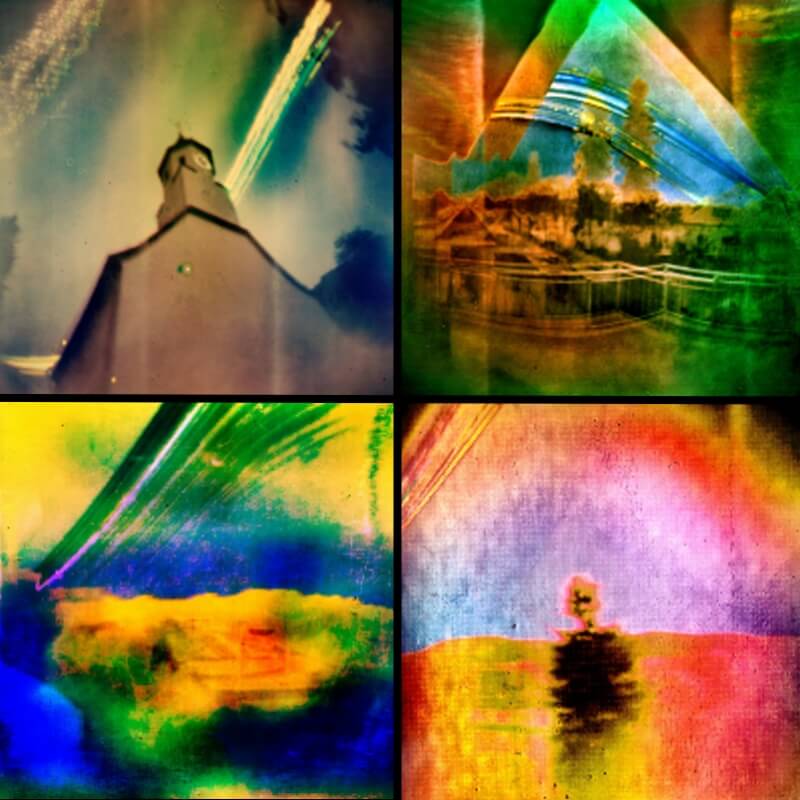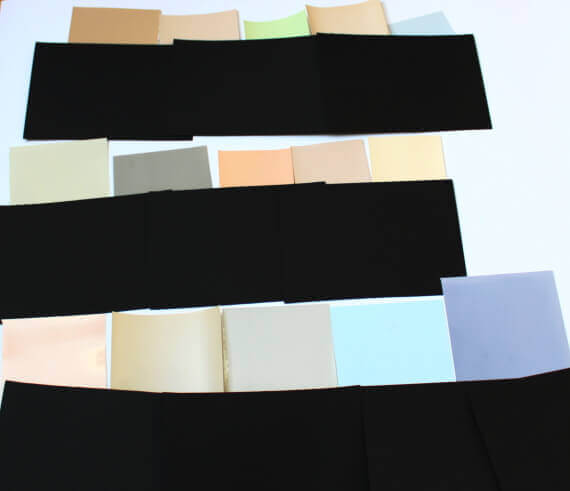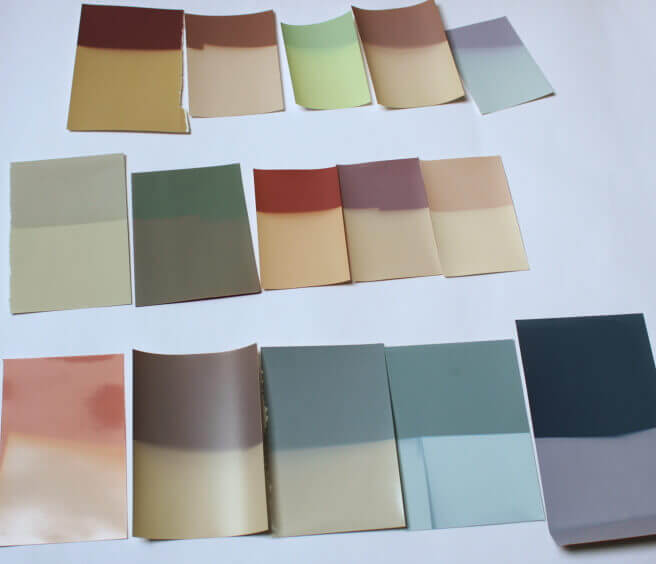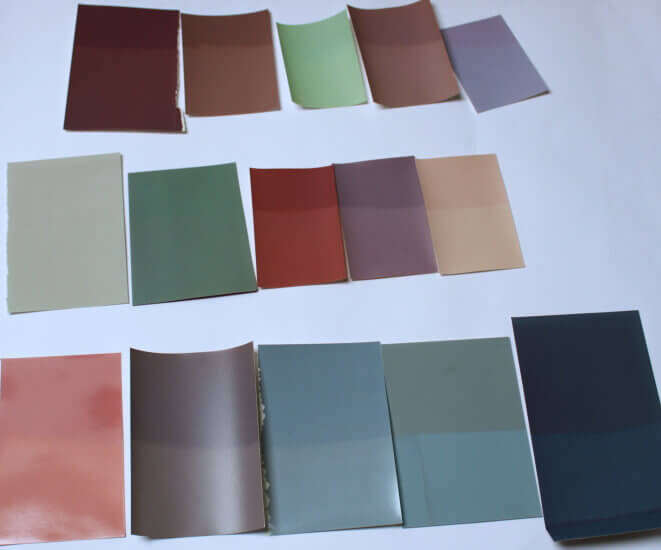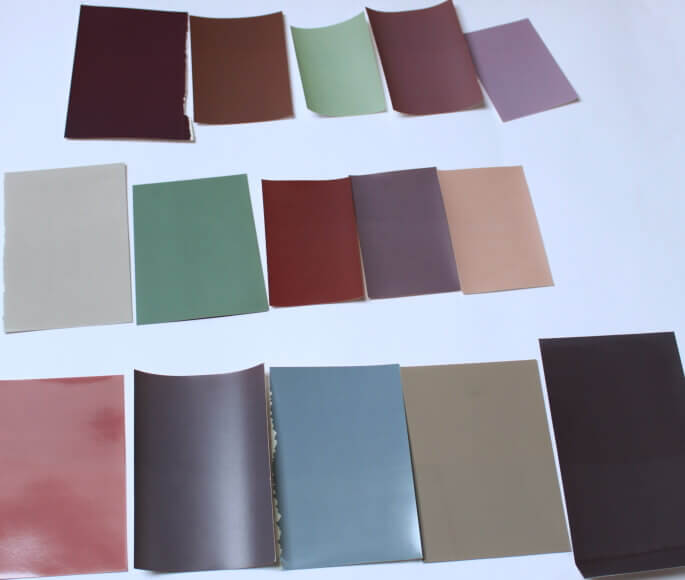How black and white photo paper becomes colored
One question we are often asked is why our Camera Obscura photographs display so many different colors.
A key reason lies in the photographic paper we use. Each type of paper has its own chemical composition and therefore reacts differently to light. In our project, we use hundreds of different papers – some of them more than 50 years old. (see images below)
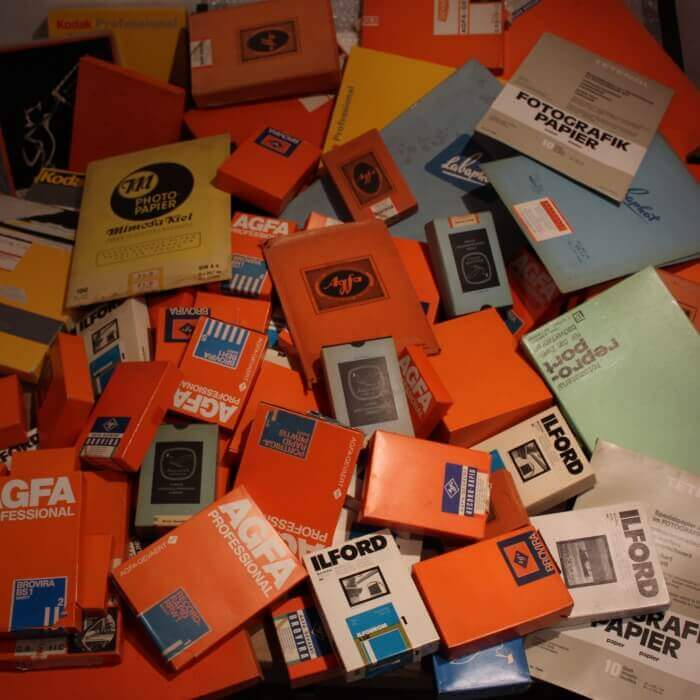
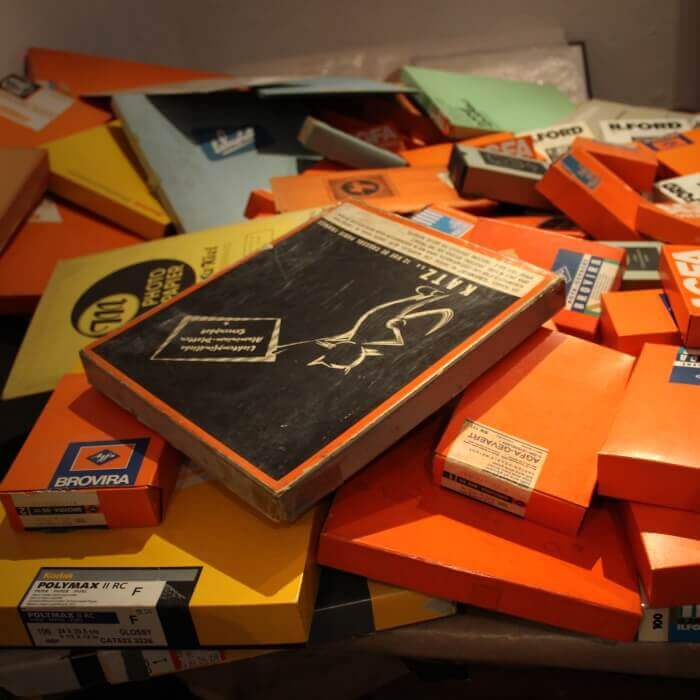
Comparing Different Photographic Papers
To illustrate these differences, we carried out a small experiment:
We exposed fifteen different types of photographic paper to light. Half of each sheet was covered with black cardboard (Image 1).
Result: In Image 4 the different color nuances of each paper can clearly be seen.
After two hours of exposure: the uncovered parts had already darkened significantly.
After another two and a half hours: the previously covered areas also darkened until each sheet showed a uniform tone (Image 2–3).
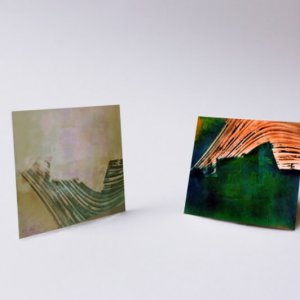
Negative and Positive – An Example
In the following image you see on the left a sheet of photographic paper exposed for one year as a negative:
- Areas with a lot of sunlight appear in deep blue (for example, the traces of the sun).
- Areas with less light exposure remain brighter (such as the house in the picture).
When we invert this negative into a positive, the complementary colors emerge:
- The blue traces of the sun become a strong red.
- The house shifts from purple/yellow to green/blue.
Photographs with a short exposure time (7–14 days) usually appear more monochrome.
With long-term exposures, however, a wide spectrum of colors often develops.
Chance as Part of the Art Project
What the final image will look like is something we can never predict. This element of chance is an essential part of our project: every photograph becomes a unique work of art.
We would like to thank the I.G. Schwarz-Weiß Fotoclub Weil der Stadt e.V. for kindly providing the photographic papers used in this experiment.

